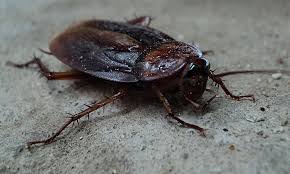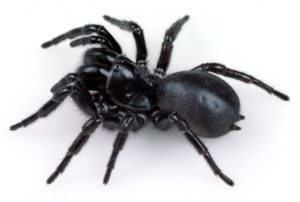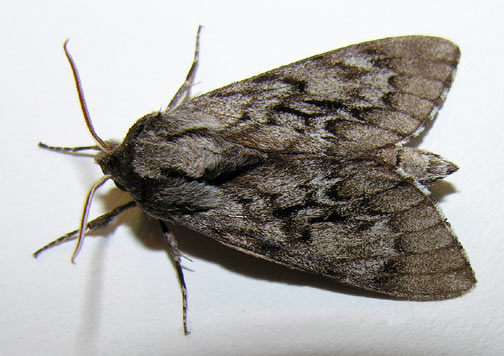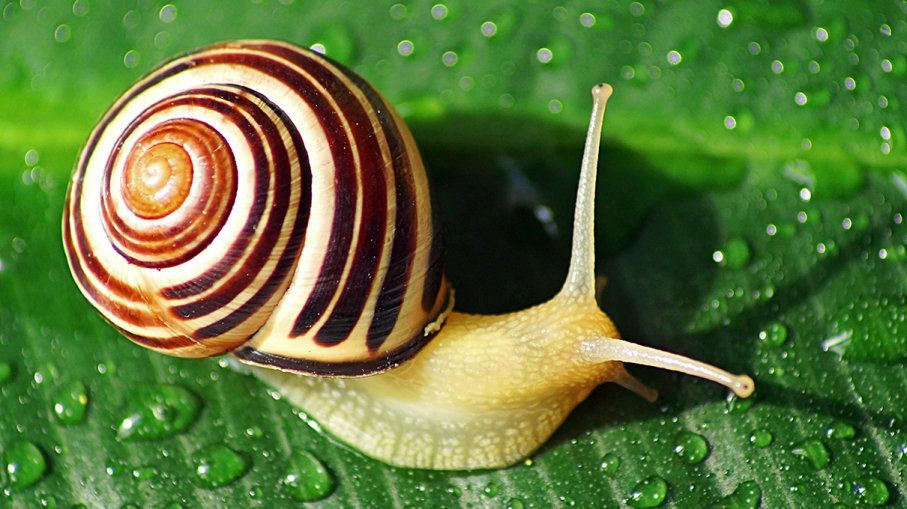Sandflies are different from the normal house flies. They are brown or black flies that live on human blood. Sandfly is basically a general name given to flies that suck on human blood. Sandflies bite humans. In different countries, sand flies may refer to different species. Most commonly, the sand fly is a simple name for female Phlebotominae. In other countries, like New Zealand, the sand fly refers to a blackfly. Here, we will discuss the more common phlebotominae reference.
What do Sandflies look like?
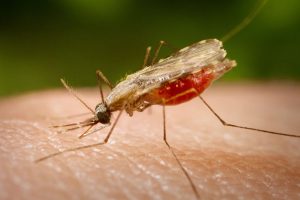 Sandflies are small flies, measuring about 0.3 cm in length. They have small bodies and are brownish golden in color. They have the color of sand, which is why they are called sand flies.
Sandflies are small flies, measuring about 0.3 cm in length. They have small bodies and are brownish golden in color. They have the color of sand, which is why they are called sand flies.
They have hairy wings. When sand flies are resting, their wings are straight up, instead of resting horizontally. This feature makes them distinct from other species of flies. Their hairy wings also make them distinct.
Sand flies have a strong and long mouthpiece. This mouthpiece pierces the skin of humans and is used to suck human blood. The mouthpiece of male sand flies is different from female sand flies because the male sand flies do not bite mammals like humans. Sand flies have long legs. Their leg size is even longer than their body size.
Do all sand flies bite?
All sand flies do not bite. Only female sand flies bite. This is because female sand flies need to produce eggs. In order to produce eggs, they need proteins, which they obtain from human blood. Without sucking human blood, most sand flies cannot generate or lay eggs. Therefore, biting humans to get blood is an important part of a sand fly’s lifecycle.
Sandfly
Basically, the sandfly is not the name of a specific fly but it is a colloquial name to the flies that can bite and suck the blood. These flies live in sandy areas. These flies are also known as the horse flies in the united states. There are many other names used for these flies like a sand gnat, sandflea, Chitra, punky etc.
Do you want to identify them? In the size, the sandflies are 1/8 inches long. They have hairy and grey wings. The detailed appearance of these flies tells they have wings above their bodies in the V shape. You can find them active in the morning and the evening.
These flies love to live in moisturized areas like mud, in the roots of plants, etc. So, if you have these types of areas around your house, you can be affected by them.
Sandfly Bites
These flies can carry and transfer the diseases to humans as well as animals. The diseases caused by these flies are known as sandfly fever.
So, there is no doubt about sandfly bites. Basically, the female sandfly bites and suck the blood of human, animals, birds and other insects also. There are some proteins in the blood that is necessary to lay eggs for the female sandfly.
Like the mosquitoes, it is necessary for the female sandflies to suck the blood of humans and animals to lay eggs. After sucking the blood, they can lay eggs directly on the moisturized places. This is the only reason for their bites.
Do sandfly bites hurt?
Unfortunately, yes. Sandfly bites can hurt, although not much. They feel like a tiny pinch. You might not even notice the bite until after hours later. Sandfly bites cause a lot of itching afterward. They produce a red, itchy area.
Sand flies are usually active after the evening hours and during the night. They are inactive during the day so your chances of a sandfly biting increase after dawn and during the night. During the day, sand flies are inactive and spend their time resting. They may be found inside your home, resting in a dark place. Sand flies should not be disturbed while they are resting because then, they might try to bite. Other resting places include outdoor branches of trees and other dark areas where it’s hard for them to get noticed.
What does a sand fly bite do? Is it harmful?
A sand fly bite in itself isn’t harmful. However, sand flies can act as vectors. This means that the sand flies aren’t harmful themselves, but they can carry harmful viruses. The following are a few examples of harmful organisms that sand flies can carry:
- Leishmaniasis
- Sandfly fever by a phlebovirus
- Chandipura virus
- Many other viruses.
How to identify sandfly bite?
After biting you can know that which thing has sucked your blood because if you don’t know then you cannot prepare yourself for the treatment. So, there are some symptoms you can see after the Sandfly Bites.
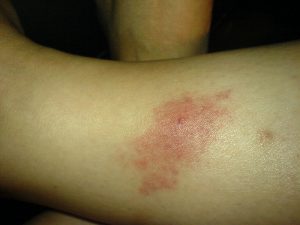 Symptoms
Symptoms
In the general point of view of researchers, the sandfly bites are so painful and can leave the red circles on your skin. These red circles can become dangerous infections in the future. So, the treatment of infections is very necessary.
You should know that infections are not the only problem after the bites but you can face a lot of diseases like the parasitic disease. This disease is not common in the US but you can face it during traveling to other countries.
Sometimes, you can cover these bites if you have the strong immune system or the fly could not transmit the disease properly but sometimes it can be a serious problem. So, you just know that there are no vaccinations to prevent these symptoms.
What are the symptoms of sand fly fever?
Sandfly bites may cause sandfly fever. The sand flies itself may be carrying the phlebovirus that causes sandfly fever. In this case, the sand fly acts as a vector. For example, if one person already has sandfly fever, then when a sand fly sucks the blood of the person, the virus is transmitted into the sand fly. After that, when the sand fly feeds on another person, the virus is transmitted to the other person and he/she may catch sandfly fever. This is how sand flies transfer infections. Furthermore, if an infected female sand fly gives birth, its offspring will also have the virus. They can also transmit the virus by biting humans when they attain their adult forms.
Sandfly fever symptoms include a high-grade fever of 3 to 4 degrees above normal body temperature. The fever develops a few days after the sand fly bite as it takes time for the virus to replicate inside the human body. Once the fever starts, it persists for about three days. After that, the fever starts to decline in about the next two to three days.
Apart from fever, other symptoms of sand fly fever include abdominal problems, lethargic feeling, pain in the muscles and joints, and a fast heart rate.
It may take the human body about three weeks to eliminate the virus, although the symptoms appear for only about 5 days of this total time.
Sandfly Bite Treatment
As I mentioned above, it is necessary to treat these bites. First of all, you have to avoid the bites of these flies. These flies are active in the dawn and dusk so you have to be careful in these times.
These flies can also act in the warm cloudy days. You have to take some extra caring steps in these days and you need to cover your skin with the clothes to avoid the bites of these flies.
How to treat?
So, there are two types of treatments you can apply to these bites. The first treatment is the first aid and the 2nd one is a long-term treatment.
To get rid of pain after the bites, you just need to rub the ice on your skin. Ice will give some relief to you instantly and you will forget the pain.
The other treatment is a long-term treatment. For this treatment, you have to go to the hospital and concern with the doctor. After some reports, the doctor will be able to write some tablets and injections for you. But you have to take this treatment to avoid any type of disease in the future.
How do you prevent sand fly bites?
 Sandfly bites can be prevented on many levels. One method is to control the sand fly population, by directly attacking their breeding areas with insecticides and other sprays that are specifically designed to attack sand flies and kill them. However, this may be a bit far-fetched and it may not be possible to control the sand fly population at an individual level.
Sandfly bites can be prevented on many levels. One method is to control the sand fly population, by directly attacking their breeding areas with insecticides and other sprays that are specifically designed to attack sand flies and kill them. However, this may be a bit far-fetched and it may not be possible to control the sand fly population at an individual level.
Another method is to find ways to protect yourself from the sand flies. This method is more practical on an individual level as it uses fewer resources. Some of the ways in which this can be done are listed below:
- First of all, you have to avoid moisturized areas like the beach after the rain, mud, etc. These cool and moisturized temperatures can attract the flies to become active and bite humans and animals. So, you just need to visit these places in the warm and low humidity days.
- If you are going to visit moisturized temperature areas, you just need to use the sprays or creams that are repellent to these insects.
- You can cover your body with the proper clothes before going these types of areas. Just use clothes that can cover your whole body easily. The soft skin is the better target of the sandflies. So, you have to focus on the soft skin areas to cover your body.
- After the evening, apply a repellant on your body. If you live in areas where sand flies are prevalent, then you should apply a repellent like a mosquito repellent on your body. Check your local store for specific sand fly repellents, which will repel sand flies and prevent sand fly bites from occurring.
- Use metallic net door near the entrance of your house and windows. Metallic net doors prevent these sand flies from entering your house. This way, you don’t even have to keep the door of your house closed at all times. You can enjoy the fresh air while being protected from sand flies. Furthermore, add these metallic nets to your windows as well so that whenever you open your window, sand flies cannot enter, preventing sand fly bites.
-
So, this was all about sand fly bites. If you live in an area where sand flies are commonly found, stay away from them!
Keep visiting this website for more informative posts in the future. Thanks!







